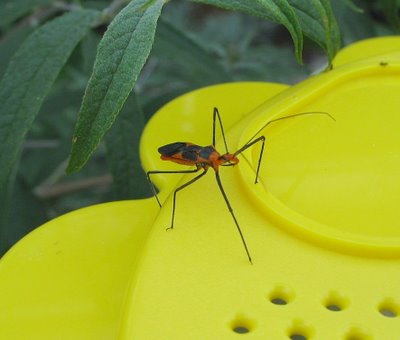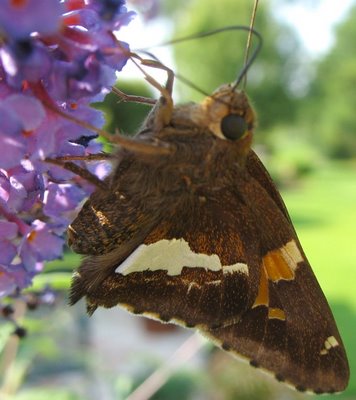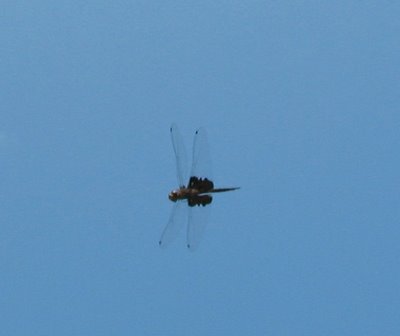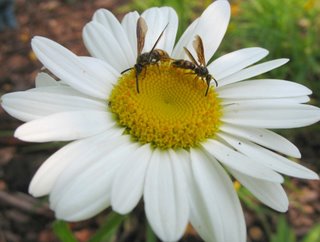
Friday, June 30, 2006
Thursday, June 29, 2006
Wednesday, June 28, 2006
Tuesday, June 27, 2006
Monday, June 26, 2006
Sunday, June 25, 2006
Saturday, June 24, 2006
Argiope aurantia
Friday, June 23, 2006
Eastern Pondhawk Dragonfly
Thursday, June 22, 2006
Wednesday, June 21, 2006
Tuesday, June 20, 2006
Leaf Beetle

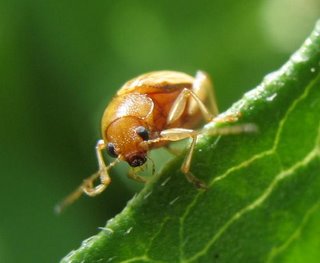
This little guy was less than 3/8 inches long and was identified as a Colaspis leaf beetle by the folks at bugguide.net.
Monday, June 19, 2006
Sunday, June 18, 2006
Large Milkweed Bug
 Milkweed bugs have few predators because they concentrate in their bodies bad tasting compounds found in the sap of milkweed plants. The bugs use "apostematic coloration" to advertise their bad taste.
Milkweed bugs have few predators because they concentrate in their bodies bad tasting compounds found in the sap of milkweed plants. The bugs use "apostematic coloration" to advertise their bad taste.Aposematic Coloration - In biology, the technical name for warning coloration markings that make a dangerous, poisonous, or foul-tasting animal particularly conspicuous and recognizable to a predator.
Saturday, June 17, 2006
Friday, June 16, 2006
Fragile Symbols of our Complex Natural World
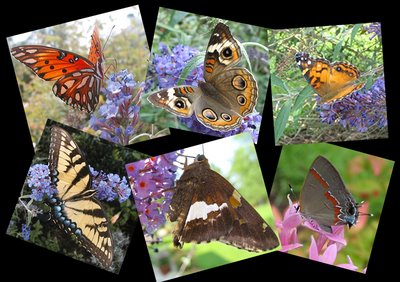 With their acute sensitivity to pesticides and toxins, their presence, diversity and relative abundance indicate the overall well-being of our ecosystems.
With their acute sensitivity to pesticides and toxins, their presence, diversity and relative abundance indicate the overall well-being of our ecosystems.Their message is simple: A healthy community usually has a large number and wide array of butterfly species; a contaminated or altered community doesn't.
"We must remember, that for all the enjoyment we get from these beautiful creatures, we give them little. And, ultimately, we hold their future in our hands..." The same holds true for all creatures -- large and small -- with which we share the planet's air, water, and land."
Robert Michael Pyle
Nature Writer
Thursday, June 15, 2006
The word for today is ...
Proboscis - a long straw like structure on the head of a butterfly which they use to drink nectar and juices. When not in use, the proboscis remains coiled like a garden hose.
I remember this word from the Cootie game that I played as a child.


I remember this word from the Cootie game that I played as a child.


Wednesday, June 14, 2006
What is it?

I was not familiar with this insect so I sent the image to bugguide.net which is hosted by Iowa State University Entomology. Within an hour I received an email answer back that it was a Mydas Clavatus fly which is one of the largest flies in the U.S.
Tuesday, June 13, 2006
Peek-a-boo
Monday, June 12, 2006
Silver-spotted Skipper
Sunday, June 11, 2006
American Painted Lady
Saturday, June 10, 2006
Friday, June 09, 2006
The Beat of a Different Drummer
A strange "rat-a-tat-tat" sound emanating from the fireplace this morning turned out to be a woodpecker on top of the chimney. 
Woodpeckers use these short one-second bursts of noise to announce their territory or attract a mate. Play the video below to hear the sound of the new drummer in the neighborhood.

Woodpeckers use these short one-second bursts of noise to announce their territory or attract a mate. Play the video below to hear the sound of the new drummer in the neighborhood.
Hard at Work
Thursday, June 08, 2006
"Fantasy" Crepe Myrtle
Wednesday, June 07, 2006
Tuesday, June 06, 2006
Red-banded Hairstreak
A Red-banded Hairstreak visiting the pink Penta blossoms.

Hairstreaks are characterized by the tiny hairlike tails on their hind wings. They move their hind wings up and down which draws attention to the hairs projecting at the back(watch video below). This serves the purpose of fooling predators into attacking the back of the butterfly instead of its head.

Hairstreaks are characterized by the tiny hairlike tails on their hind wings. They move their hind wings up and down which draws attention to the hairs projecting at the back(watch video below). This serves the purpose of fooling predators into attacking the back of the butterfly instead of its head.
Monday, June 05, 2006
Battered Buckeye
Sunday, June 04, 2006
Peace Lily
Saturday, June 03, 2006
Japanese Beetles
Friday, June 02, 2006
Subscribe to:
Posts (Atom)



